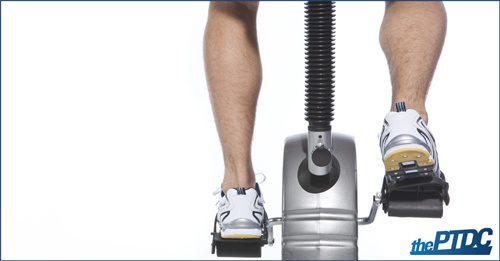Many people assume that you must choose between having a successful career or a healthy lifestyle. The truth is there's no need to make such decisions. You can have both.
Fitness is not a privilege given to a few of us - it's a necessity and a duty for every one of us. Being fit is what we owe our bodies for being such an amazing tool, and for allowing us to become whatever we dream of.
Fitness, like everything else, is not about how much you do, but identifying what really works and then redirecting your effort towards doing it -- every single day.
No matter if you're the coach or the trainee, you need to follow these 8 steps.

How do you structure your functional training program?
1. The exercises should have gradation. They should start from the exercise that's most demanding. Thus, when the trainee is most refreshed, they'll start with the most challenging movement and get the most out of it.
The most demanding exercises are usually deadlifts and squats. That's why I always start with them. In cases where I start with a unilateral knee dominant movement -- Bulgarian squats, Pistol Squats, Lunges -- I don't include deadlifts or squats in that workout.
Suggested Reading - 13 Ways to Vary any Exercise by Jonathan Goodman
2. The exercises should be applicable to the particular person. A challenging exercise for one lifter might be a piece of cake for another.
Suggested Reading - What does "Functional" really mean? by Jon-Erik Kawamoto
3. The body moves in different planes -- this means that the movements we include in a workout should cover all the planes.
You should rotate the movements - in one workout in a horizontal plane, next time a vertical plane and so forth.
For example, pull-ups, one-arm crossover pulldowns, and lat pulldowns are in a vertical plane. Renegade rows, dumbbell rows, and horizontal pull-ups are all in a horizontal plane.
4. When the first movement is knee dominant, the second lower body movement should probably be hip dominant and vice versa.
This means that when you have squats, Bulgarian squats, or lunges as a main exercise, the second lower body movement should be something like hip thrusters, good mornings, kettlebell swings, and so forth.
Conversely, when the first exercise is a deadlift variation, the second should be a knee dominant unilateral movement, such as lunges, pistols, or Bulgarian squats.
Editors Note: Obviously there are exceptions but this rule stands for most general population clients.
Suggested Reading - Screening the Squat by Justin Kompf
Suggested Reading - 10 Things That Trainers Need to Know About Kettlebells by Neghar Fonooni
5. Exercises are either unilateral or bilateral. Unilateral exercises are performed one limb at a time and bilateral are performed both limbs simultaneously. Clients will often present with some sort of an imbalance between their left and right side. When they perform bilateral movements, they instinctively push or pull more with their stronger limb.
That's why it is really important to include both types of movements. Military presses, push-ups, and dips are bilateral. Side presses, landmine pushes, and lunges are unilateral.
Considering that most people train 2-3 times a week, I usually rotate the main exercises as follows: one workout starts with squats, the next with deadlifts, and the third with a unilateral movement. This ensures everything is included for optimal development.
Suggested Reading - 55 Reasons Why the Deadlift is the Best Exercise of All Time by Dean Somerset
6. Exercises included in one workout should logically complement one other
If you have a renegade row in your workout, you don't need to perform a plank. Both exercises load the torso in the same plane, requiring stabilization. You'd be better off substituting the plank with a twisting movement like the full contact twist or Paloff press.
Editors Note: Here's PTDC coach Dean Somerset demonstrating the Renegade Row
Editors Note: Here's PTDC coach Nick Tuminello demonstrating the Paloff Press
7. You should choose the exercises based on the mobility and level of physical preparedness of the trainee.
The exercises should be modified accordingly. For example, the deadlift might be performed from bumpers or blocks, so the ROM can match the trainee without compromising technique.
The military press might be performed with a different grip or dumbbells.
Suggested Reading: 15 Common Mobility Mistakes by Eric Cressey
8. You should consider the imbalances of the particular trainee.
If somebody has serious back issues, meaning his or her back muscles haven't a clue how to work, it's better to skip some of the pushing movements and include two pulling movements.
In this example you'd be better off using more unilateral upper body movements as they allow for stricter technique, so the trainee can feel the load better and thus learn to activate his sleepy muscles.
You (or your clients) should never feel like they have to choose between excellent health and career success. A great functional fitness workout doesn't have to be a time consuming or complicated endeavor - just a commitment to hitting these 8 key steps.
Suggested Reading: The Real Reasons that You Still Have Back Pain by Armi Legge









